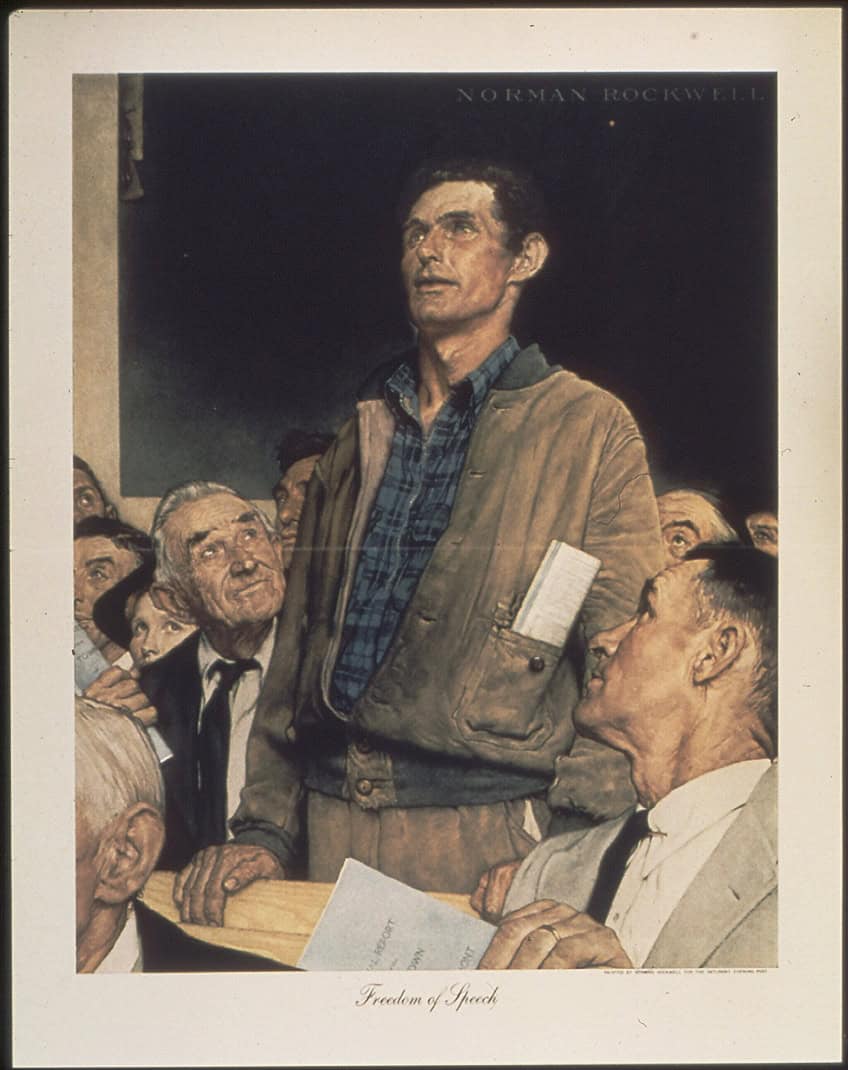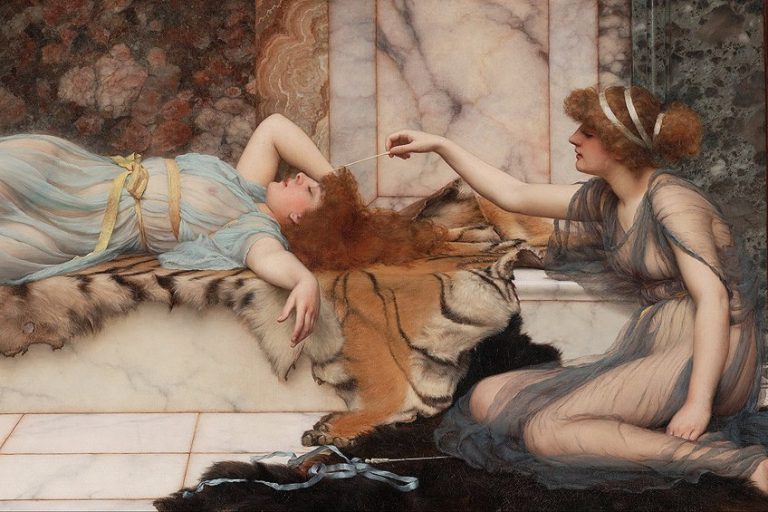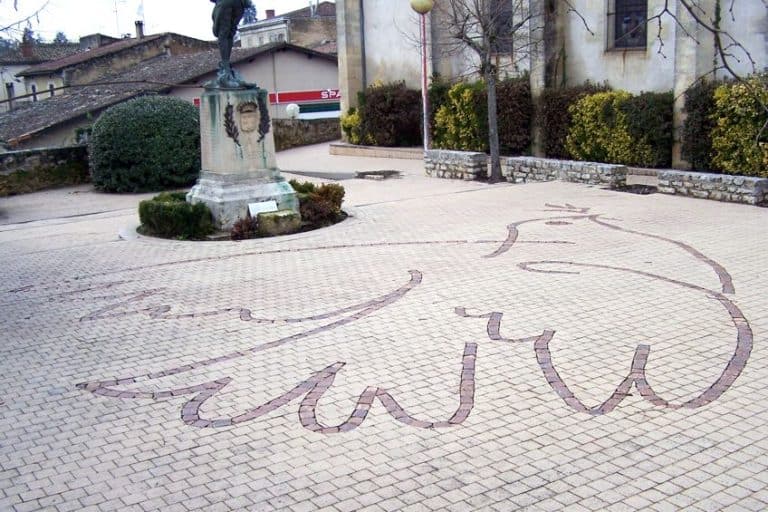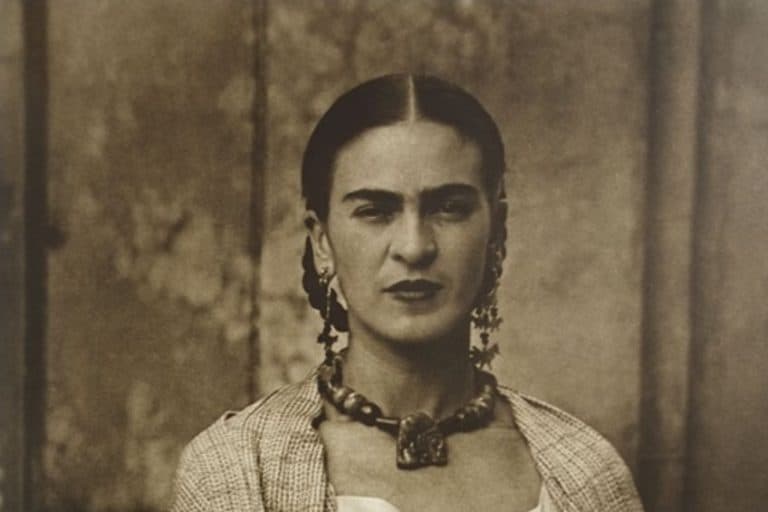“Freedom from Fear” by Norman Rockwell – A Vision of Security
Norman Rockwell’s Freedom from Fear, created in 1943, is one of the four iconic paintings in his Four Freedoms series, inspired by President Franklin D. Roosevelt’s 1941 State of the Union address. This poignant artwork depicts a serene domestic scene where parents tuck their children into bed, embodying the universal aspiration for security and peace amidst the turmoil of World War II. Rockwell’s meticulous attention to detail and his ability to evoke deep emotional responses make Freedom from Fear a powerful representation of the human desire for safety and the enduring hope for a better world.
Key Takeaways
- Norman Rockwell’s Freedom from Fear is part of his influential Four Freedoms series.
- The painting highlights the universal desire for security and protection during wartime.
- Freedom from Fear underscores the global impact and cultural significance of fundamental human rights.
Norman Rockwell’s Influence and Legacy
| Artist | Norman Rockwell (1894 – 1978) |
| Date Created | 1943 |
| Medium | Oil on canvas |
| Genre | Illustration |
| Period/Movement | American Realism |
| Dimensions (cm) | 116.2 × 90 |
| Series/Versions | Part of the Four Freedoms series |
| Where Is It Housed? | Norman Rockwell Museum, Stockbridge, Massachusetts, United States |
| What It Is Worth | Estimated in the tens of millions; significant cultural and historical value |
Freedom from Fear by Norman Rockwell is one of the iconic paintings from his Four Freedoms series, produced in 1943. Depicted with a poignant blend of everyday life and emotional depth, Rockwell’s painting portrays a serene family moment, with parents tucking their children into bed—a symbol of security and protection amidst the turmoil of World War II. Rockwell’s Four Freedoms paintings, inspired by President Franklin D. Roosevelt’s 1941 State of the Union address, aimed to articulate fundamental human rights.

These artworks captured the essence of Freedom of Speech, Freedom of Worship, Freedom from Want, and Freedom from Fear, drawing widespread admiration and effectively promoting national solidarity. The cultural and artistic significance of Freedom from Fear is profound, as it not only encapsulated a crucial moment in American history but also resonated globally. The painting underscored basic human rights and aspirations, making Norman Rockwell’s work a timeless reminder of our collective responsibility to uphold freedom and justice.
Patriotism Through Art
Rockwell’s paintings often depicted quintessential American values and everyday scenes. During World War II, his Four Freedoms series, including Freedom from Fear, bolstered national morale. The paintings were published in The Saturday Evening Post and later used in war bond drives, raising over $132 million.
This exceptional mobilization of art for patriotic purposes showcases Rockwell’s unique role in connecting with the American public and contributing to the wartime effort.
Rockwell’s Impact on American Culture
Rockwell’s portrayal of American life is preserved at the Norman Rockwell Museum in Stockbridge, Massachusetts. His realistic and often sentimental style captured the essence of mid-20th century America, influencing both contemporary artists and the general public. Through his oil paintings, Rockwell did not just reflect society; he helped shape it by presenting an idealized yet familiar vision of American life, which continues to have lasting cultural significance.

Freedom from Fear: Context and History
Freedom from Fear, painted by Norman Rockwell in 1943, was one of four paintings inspired by President Franklin D. Roosevelt’s Four Freedoms speech. This section outlines the historical context, its publication in The Saturday Evening Post, and Roosevelt’s vision.
World War II and the Four Freedoms
During World War II, the global conflict brought immense strife and uncertainty. President Franklin D. Roosevelt, in his 1941 State of the Union Address, articulated Four Freedoms critical to the post-war world: freedom of speech, freedom of worship, freedom from want, and freedom from fear. These ideals aimed to rally the American public and justify the war effort against oppressive regimes.

Rockwell’s painting, Freedom from Fear, depicts parents tucking their children into bed amidst the wartime backdrop, symbolizing the protective assurance desired during such turbulent times. The portrayal aligns with the overarching desire for a secure and peaceful future.
The Saturday Evening Post Feature
The Saturday Evening Post played a pivotal role in publicizing Norman Rockwell’s Freedom from Fear painting. The artwork was published in the magazine’s March 13, 1943, issue alongside an accompanying essay. The Post, with its wide readership, was instrumental in spreading the message of Roosevelt’s Four Freedoms. Rockwell’s paintings, including Freedom from Fear, received an overwhelmingly positive response.
This endorsement translated into 25,000 requests for reprints, illustrating the public’s resonance with the artwork and the values it encapsulated.
President Franklin D. Roosevelt’s Vision
President Franklin D. Roosevelt envisioned a world where fundamental freedoms were guaranteed for all. In his 1941 State of the Union Address, he outlined the Four Freedoms as essential components for post-war peace and security. These freedoms were not merely American values but were seen as universal rights.

Roosevelt’s articulation of Freedom from Fear focused on a world where no nation would live in dread of aggression from its neighbors. He believed that ensuring this freedom would contribute significantly to international stability and harmony, reinforcing a collective security framework vital for enduring peace.
Norman Rockwell’s interpretation of Freedom from Fear brought this vision to life, providing a powerful visual representation that continues to resonate with audiences.
The Four Freedoms and Their Global Impact
The Four Freedoms articulated by President Franklin D. Roosevelt in 1941 played a vital role in shaping international human rights norms, influencing foundational documents like the Charter of the United Nations and the Universal Declaration of Human Rights.
Charter of the United Nations
The Charter of the United Nations, created in 1945, incorporated principles from Roosevelt’s Four Freedoms: Freedom of Speech, Freedom of Worship, Freedom from Want, and Freedom from Fear. These freedoms encouraged the protection of fundamental human rights and the dignity of every individual, which became central to the UN’s mission.
The emphasis on the reduction of armaments and prevention of future conflicts underscores Freedom from Fear, advocating for worldwide peace and security. Member states committed to upholding these principles, ensuring that government actions align with these goals.
Universal Declaration of Human Rights
The Universal Declaration of Human Rights, adopted in 1948, explicitly reflects the Four Freedoms. Particularly, Article 19 enshrines Freedom of Speech, while Article 18 protects Freedom of Worship. Freedom from Want is addressed in Articles 22 to 27, covering economic, social, and cultural rights, including the right to an adequate standard of living. Freedom from Fear is inherent in the declaration’s call for peace and security, proposing that all nations work towards disarmament and the protection of individuals from persecution. This proclamation has influenced numerous national constitutions and international treaties, reinforcing the vision Roosevelt espoused.

Cultural and Artistic Significance of Freedom from Fear
Freedom from Fear by Norman Rockwell holds a prominent place in both cultural and artistic domains as part of the renowned Four Freedoms series inspired by President Franklin D. Roosevelt’s 1941 State of the Union Address. The painting captures the ideal of security and the intrinsic hope during the tumultuous World War II era.
Influence on Modern Art and Artists
Norman Rockwell’s Freedom from Fear significantly influenced modern art and artists by embodying the emotional and moral objectives of its time. The painting, a centerpiece of the Second War Bond Drive, motivated citizens to support the United States Department of the Treasury’s war efforts through the purchase of War Bonds. The realistic style and poignant themes demonstrated how art could effectively communicate and rally public sentiment.
Artists today draw on Rockwell’s approach, blending realism with powerful narrative, to create works that address contemporary societal issues.
This influence is visible in modern artistic movements that aim to elicit emotional responses and provoke thought. Rockwell’s meticulous detail and ability to convey subtlety within the bounds of everyday life continue to inspire art that speaks to personal and collective values.
Permanent Exhibitions and Collections
Freedom from Fear is not confined to historical references but remains actively displayed in significant cultural institutions. The painting forms part of the permanent collection at the Norman Rockwell Museum in Stockbridge, Massachusetts. This museum, dedicated solely to Rockwell’s work, ensures the ongoing preservation and public accessibility of the Four Freedoms series.

The Smithsonian Institution also features Rockwell’s work, offering broader visibility to diverse audiences. Permanent exhibitions at these respected institutions highlight the painting’s lasting relevance and artistic merit. Such prestigious collections affirm its value and standing within both American cultural history and the broader art community, underscoring Rockwell’s ability to create work that resonates across generations.
Freedom from Fear remains a testament to Norman Rockwell’s ability to capture the essence of American ideals and the human condition through his art. By portraying a moment of familial tenderness against the backdrop of global conflict, Rockwell not only underscored the importance of Roosevelt’s Four Freedoms but also resonated with the public’s longing for normalcy and protection during turbulent times. This artwork, with its timeless appeal and emotional depth, continues to inspire and remind us of the fundamental right to live without fear, reinforcing its place in the canon of American art and its enduring relevance in contemporary society.
Frequently Asked Questions
What Symbolism Is Present in Rockwell’s Freedom from Fear Artwork?
The painting shows parents tucking their children into bed, representing a sense of security and peace. The father holds a newspaper with headlines referencing wartime bombings, juxtaposing safety at home with global conflict. Rockwell uses this scene to highlight the ideal of a world where people live free from the dread of violence.
How Did the Historical Context Influence the Creation of Freedom from Fear?
Freedom from Fear was created during World War II, inspired by President Franklin D. Roosevelt’s State of the Union Address in 1941. The speech outlined four fundamental freedoms, including the freedom from fear, which became a cornerstone of Rockwell’s series. The painting aimed to bolster American morale and underscore the reasons for the nation’s involvement in the war.
How Does Freedom from Fear Compare to the Other Paintings in Rockwell’s Four Freedoms Series?
Freedom from Fear differs from the other Four Freedoms paintings in its domestic setting and intimate portrayal. While Freedom of Speech and Freedom of Worship emphasize public and communal experiences, and Freedom from Want focuses on abundance and familial joy, Freedom from Fear touches on personal safety and the protection of loved ones. Each painting uniquely addresses one of Roosevelt’s freedoms but together they present a unified vision of a peaceful and just society.
Isabella studied at the University of Cape Town in South Africa and graduated with a Bachelor of Arts majoring in English Literature & Language and Psychology. Throughout her undergraduate years, she took Art History as an additional subject and absolutely loved it. Building on from her art history knowledge that began in high school, art has always been a particular area of fascination for her. From learning about artworks previously unknown to her, or sharpening her existing understanding of specific works, the ability to continue learning within this interesting sphere excites her greatly.
Her focal points of interest in art history encompass profiling specific artists and art movements, as it is these areas where she is able to really dig deep into the rich narrative of the art world. Additionally, she particularly enjoys exploring the different artistic styles of the 20th century, as well as the important impact that female artists have had on the development of art history.
Learn more about Isabella Meyer and the Art in Context Team.
Cite this Article
Isabella, Meyer, ““Freedom from Fear” by Norman Rockwell – A Vision of Security.” Art in Context. June 14, 2024. URL: https://artincontext.org/freedom-from-fear-by-norman-rockwell/
Meyer, I. (2024, 14 June). “Freedom from Fear” by Norman Rockwell – A Vision of Security. Art in Context. https://artincontext.org/freedom-from-fear-by-norman-rockwell/
Meyer, Isabella. ““Freedom from Fear” by Norman Rockwell – A Vision of Security.” Art in Context, June 14, 2024. https://artincontext.org/freedom-from-fear-by-norman-rockwell/.











